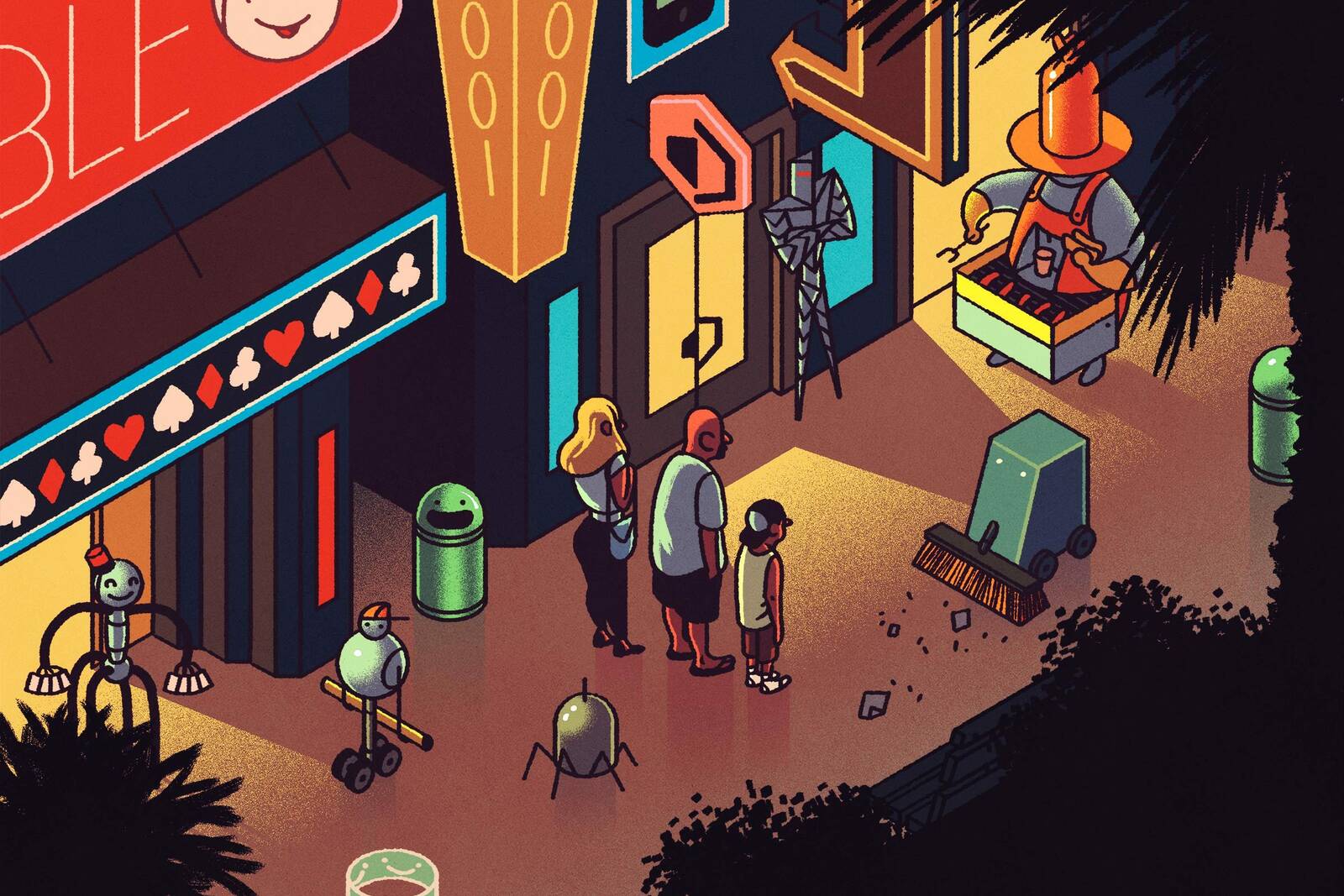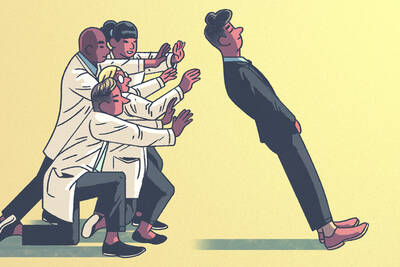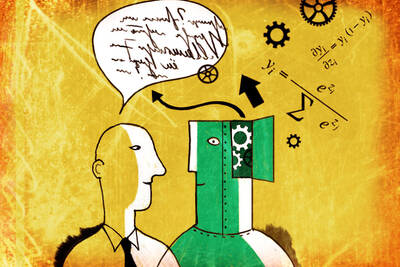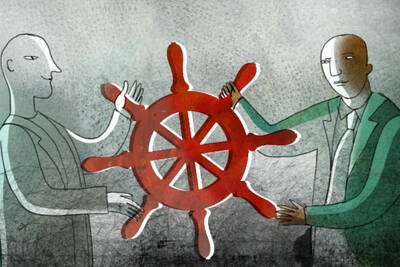Innovation Mar 18, 2021
The Pandemic Could Accelerate Job Automation—and Inequality
Consequences for workers and cities could be bleak.
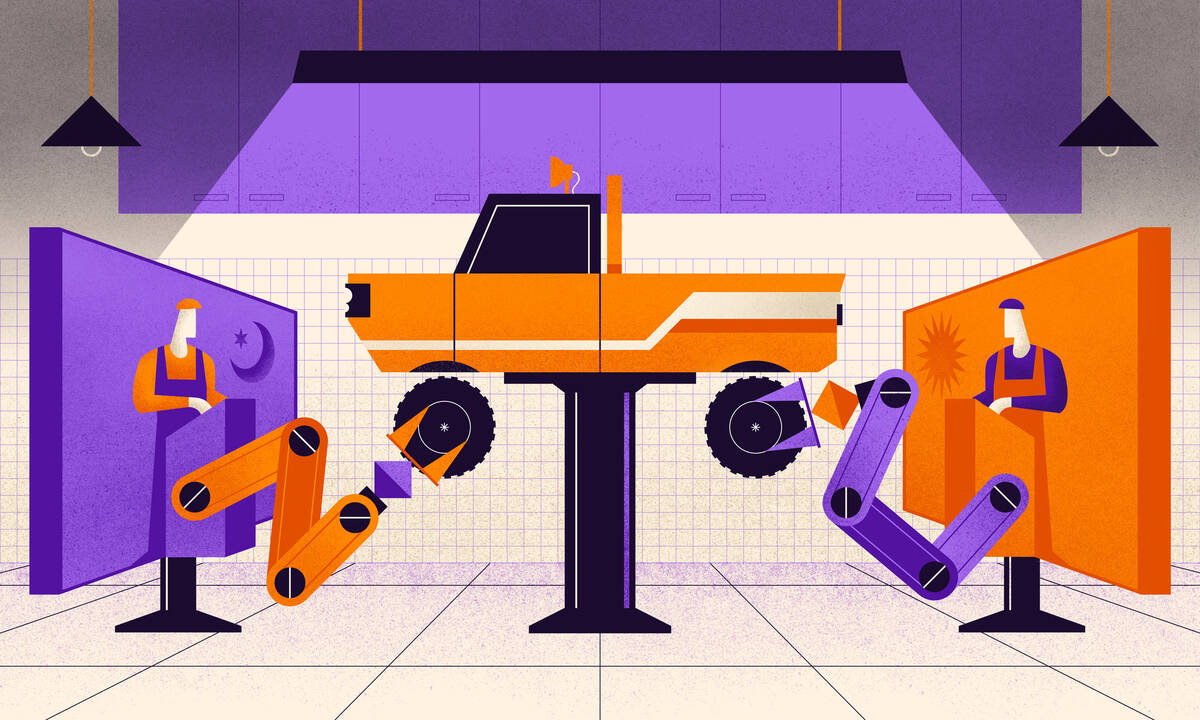
Riley Mann
For more than a year now, many of us have worked from home, pets on laps, children babbling just offscreen. The experience has been a revealing one. Some of us have learned to embrace the flexible hours, the five-step commute, and the relative dearth of pointless meetings; others have felt disengaged and burned out by the challenges of collaborating on Zoom.
But the pandemic has also exposed a more significant split in the labor market, one that has experts worried as they speculate on the long-term impacts of the crisis.
“What we now see very clearly is that some jobs can be done from home, and others simply cannot,” says Hyejin Youn, an assistant professor of management and organizations at the Kellogg School. “Distinguishing between these types of work can help us track inequities in the labor market across cities.”
So far, the trends are worrisome. Those who can log on from home have been largely unaffected, whereas those whose jobs require a physical presence have either been laid off or faced with the choice of protecting their health or guaranteeing their next paycheck. And as companies look to cut costs, more and more jobs are now under threat of automation, which Youn fears may widen the gap between cities that flourished pre-pandemic and those that were already struggling.
“There’s always the hope that a crisis like this will spur innovation,” Youn says, “and nobody knows precisely what the long-term outcomes will be. But the concern is that rather than shaking things up, the pandemic might simply reinforce the system we already have.”
From “Optimization” to Automation
One consequence of remote work is that companies might accelerate the pace of automation, in part because they’ve had a chance to monitor more workers online and assess which tasks—or entire jobs—a machine might do more quickly.
With nearly forty percent of U.S. jobs at risk of automation, according to the World Economic Forum, the performance data from 2020 might have significant implications. When an employee’s every click, step, or delivery stop is recorded in digital form, a company can learn to optimize that work—and perhaps codify human routines into processes that are better suited to machines.
Using digital information, companies can identify and optimize certain task routines by finding better ways of arranging the tasks within the routine, micromanaging human workers, and developing machines to take on the tasks.
“It might make the echo-chamber problem worse, with certain kinds of high-skilled workers hermetically sealed from everyone else.”
— Hyejin Youn
“This is the uncomfortable truth,” Youn says. “Recording an employee’s work is preparing for the day when you replace them with a machine. And this will lead to further gaps in wages, skills, and social capital.”
And while there will still be some tasks that are not codifiable—especially ones that require tacit knowledge or empathy and hospitality—certain jobs are sure to be streamlined and passed on to less-skilled laborers or organized into routines that can be handled by machines.
“Technology has always increased inequity,” Youn says. “Now we just have the means to make it happen even faster.”
The Impact on Cities
If these trends do accelerate, the effect on America’s urban landscape could be devastating. Youn has previously studied the ways in which automation affects U.S. cities unequally, and she worries that this disparity will only worsen as businesses adapt to post-pandemic life.
“Cities might segregate further,” she says. It’s likely that wealthy, productive hubs like Silicon Valley will return to something resembling business-as-usual, given how valuable in-person collaboration can be for the kinds of breakthroughs on which tech thrives. On the other hand, the outlook for a small or medium city might be even more bleak than in 2019.
The impact of this geographic rift is hard to measure, Youn says, but it likely doesn’t bode well for the effort to solve the nation’s social and political polarization.
“It might make the echo-chamber problem worse, with certain kinds of high-skilled workers hermetically sealed from everyone else,” she says. Mountain View might come to seem even further away from Baltimore. And the prospect of remote-work patterns extending beyond 2020 is threatening to exacerbate the winner-take-all economy.
“It’s a well-known phenomenon in economics that social mobility increases after certain kinds of crisis, like war,” Youn says. “But this crisis appears to be different. It’s pushing us in the opposite direction.”
Reactive Innovation
One source of hope is that the pandemic might spur new innovation. It’s certainly been a time when people and businesses have had occasion to reconsider their purpose and goals.
But Youn says we should distinguish between two kinds of innovation. The first is endogenous innovation, or change that evolves from within a business, society, or ecosystem. The second is reactive—change in response to external events.
“The pandemic is clearly a major event that will force some kind of innovation,” she says. “But this doesn’t mean we will innovate in the direction we aspire to as a nation or society. It’s less endogenous, more reactive.”
And some of this reactive innovation—including the many creative ways companies learn to digitize jobs—might have negative long-term effects. In fact, the focus on maximizing efficiency may actually limit endogenous innovation: in particular, optimizing technologies to execute processes leaves little room to come up with the kinds of breakthrough ideas that reshape industries.
For companies that have the luxury of focusing past their immediate survival on long-term innovation, Youn advises bringing employees back to the office whenever feasible. Because in her view, the early work of endogenous innovation cannot be done remotely, at least not very well.
“When it comes to arriving at ideas that are not well defined, thinking far into the future, that’s tough over Zoom.”
Andrew Warren is a writer based in Los Angeles.
